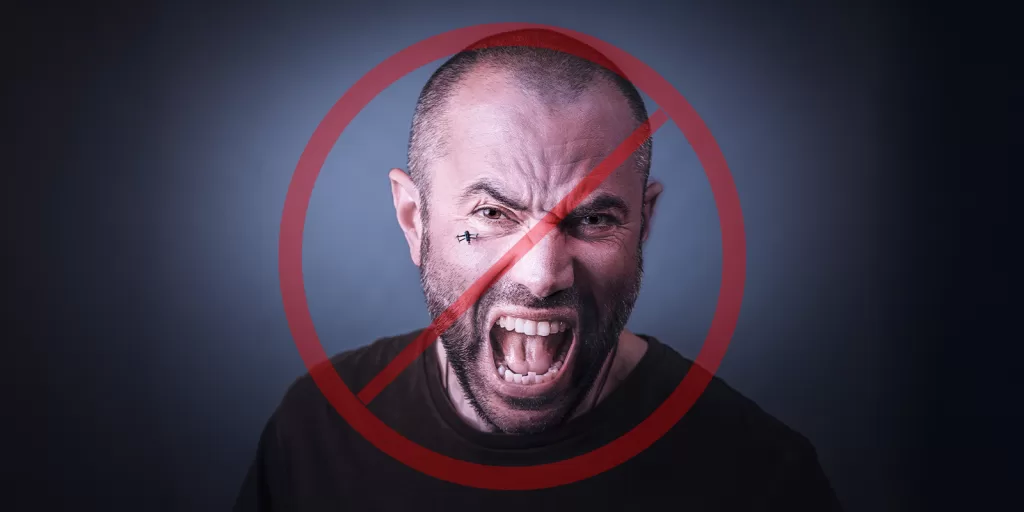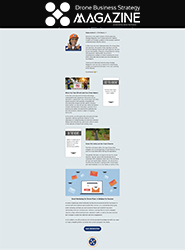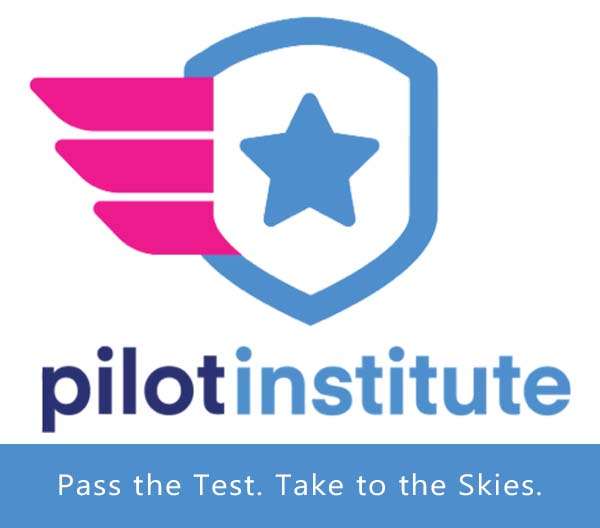
As a drone pilot, you’ve likely experienced the thrill of soaring above the landscape, capturing stunning aerial footage, and offering unique services to your clients. However, not every client is going to appreciate your skill, time, or the value you bring to the table. In fact, some clients—often referred to as “toxic clients”—can derail your business and drain your energy. Recognizing these clients before you commit is crucial to safeguarding your success.
Here’s why you need to be extra cautious about who you work with and how to spot the signs of toxic clients from the get-go.
1. Toxic Clients Drain Your Time and Energy
As a drone pilot, your time is valuable. Between flying, editing, and communicating with clients, there’s little room for waste. Toxic clients, however, often take up more time than they’re worth. They’re constantly changing their minds, demanding last-minute revisions, or not respecting deadlines. As a result, you’re left scrambling to make things right, which can compromise the quality of your work and impact your other projects.
Red flag: If a potential client is disorganized, has trouble making decisions, or shows hesitation in committing to timelines or budgets, they might not be worth your time. A clear, upfront agreement on what’s expected can help weed out those who aren’t serious.
Mitigation Strategy: To minimize this risk, always set clear expectations and boundaries from the start. Use a project brief or detailed contract that specifies deadlines, revisions, and your availability. This will help you manage your time and avoid last-minute demands that lead to scope creep.
2. They Don’t Respect Your Expertise
One of the most frustrating things about working with toxic clients is when they fail to recognize or respect your expertise. Drone piloting isn’t just about flying a drone—it’s about knowing how to capture the perfect shot, work with lighting, handle weather conditions, and ensure safety and compliance. When clients don’t value these skills, they may undermine your work, push for constant discounts, or ignore your professional input.
Red flag: If a client questions your pricing too aggressively or dismisses your recommendations on the best way to approach a shoot, they may not see the value in what you’re providing. Be sure to communicate the reasons behind your pricing and decisions, and don’t hesitate to walk away if they aren’t receptive.
Mitigation Strategy: Be upfront about the value you bring to the table. Clearly communicate the expertise required for the job and why your rates are what they are. If a client questions your pricing or decisions, calmly explain the reasoning behind your approach. Additionally, consider offering tiered packages that reflect different levels of service, so clients can understand what they’re getting for their money.
3. Unrealistic Expectations Will Set You Up for Failure
Toxic clients often come with unrealistic expectations, expecting top-notch results without understanding the time and resources needed to deliver. Whether it’s expecting high-end cinematic shots in unfavorable conditions, demanding instant delivery, or creating a project scope that’s unreasonably large, these clients can set you up for failure. Not only will this put unnecessary stress on you, but it can also damage your reputation if you can’t meet their impossible demands.
Red flag: If a potential client insists on rushed timelines or doesn’t give you enough information about what they’re actually looking for, they may be setting you up for failure. Always be clear on what’s possible within the project’s scope and timeline before agreeing to take on the job.
Mitigation Strategy: Always have a clear discussion with the client about what is achievable within their desired timeline and budget. Be honest about what is realistic and what may require additional resources. If their expectations are unreasonable, suggest alternative solutions or explain why certain requests may not be feasible. This helps set proper boundaries and ensures mutual understanding.
4. Late Payments or No Payments at All
There’s nothing more frustrating than putting in the time, effort, and resources to deliver a high-quality product only to chase down a payment. Some toxic clients may promise to pay but drag their feet when it’s time to settle up, or worse, they might disappear altogether after the job is done. If this happens repeatedly, it can disrupt your cash flow and prevent you from investing in new equipment or growing your business.
Red flag: If a client hesitates to sign a contract or has a history of late payments, it’s a major warning sign. Make sure to set clear payment terms before starting any job and ensure you have a contract that protects you in case of disputes or delays.
Mitigation Strategy: Always require a signed contract before starting any project, with clearly outlined payment terms. Consider asking for a deposit upfront (e.g., 30%–50% of the total price) to cover your initial work. Use invoicing systems that automate payment reminders, and have a clear late fee structure in your contract to encourage timely payments. This ensures you’re compensated for your time and effort, even if there are delays.
5. Poor Communication Leads to Disaster
Effective communication is key to a successful project. Toxic clients, however, are often terrible at communicating their needs, preferences, or feedback. They may go silent when you need clarification, or worse, they might leave you hanging, expecting you to read their mind. Without clear communication, it’s easy for the project to spiral out of control, leading to misunderstandings and dissatisfaction.
Red flag: If a client is slow to respond, avoids giving specific feedback, or frequently changes the details of the project without warning, these are signs of poor communication. Before taking on a new job, make sure the client is committed to maintaining an open and timely line of communication.
Mitigation Strategy: Set expectations for communication early in the process. Agree on how often you’ll check in, the best channels to communicate (e.g., email, phone, or messaging apps), and the turnaround time for responses. During the project, check in regularly to ensure everything is on track and to address any issues before they become bigger problems. Documenting conversations in emails or through project management tools can also help keep everything transparent.
How to Safeguard Your Success
As a drone pilot, it’s crucial to not just focus on honing your flying skills but also on protecting the longevity and health of your business. By being discerning about the clients you choose to work with, you’ll not only avoid the stress of dealing with toxic clients, but you’ll also increase your chances of building long-term, fruitful relationships that benefit both you and your business.
Here’s how to safeguard your success:
1. Create Strong Contracts
Contracts are your best defense against misunderstandings, disputes, and potential legal problems. Always use a written agreement that outlines all the specifics of the project—this includes the scope of work, deadlines, payment terms, rights to the final product, and any contingencies for changes or cancellations. A solid contract ensures that both you and your client are on the same page and that expectations are clearly communicated.
A well-crafted contract not only protects you legally but also serves as a foundation for professional accountability. It provides a structured roadmap for the project, ensuring both parties know what is expected of them. Additionally, in the event of any disagreements, you have a reference point to resolve the issue. Without a contract, you risk encountering clients who backtrack on agreements or make arbitrary demands without recourse.
Practical Tip: Use a professional contract template tailored for drone services, or work with an attorney to create one that suits your business needs. Include clear clauses on payment schedules, what happens in case of delays or cancellations, and how intellectual property will be handled. Always have the client sign before any work begins.
2. Screen Your Clients
It’s easy to get caught up in the excitement of landing a new job, but don’t rush into any contract without first vetting your clients. Taking the time to research potential clients can save you from future headaches. Look up online reviews, ask colleagues in your industry if they’ve worked with the client, and even search for any potential red flags in their communication style.
Take note of how the client approaches the project. Do they respect your time and expertise during initial discussions? Do they ask clear, reasonable questions or seem disorganized and evasive? If they are unwilling to provide the details you need to understand the scope of the project, or if they seem to be shopping for the cheapest service, it’s a sign that they might not be worth your time.
Practical Tip: Before signing any contract, request a brief introductory call or meeting to gauge whether the client is professional and serious about the project. You can also ask them for references or check if they’ve worked with other professionals in the industry. This helps to establish whether they have a track record of working well with service providers.
3. Set Boundaries
One of the hardest lessons for entrepreneurs is learning to say no. As a drone pilot, it’s tempting to accept every job that comes your way in hopes of building your portfolio or boosting your income. However, taking on too many projects—especially those that don’t align with your values or expertise—can lead to burnout and subpar work. Instead, focus on quality clients who respect your time and services.
By setting clear boundaries, you protect both your well-being and your business. Know what kind of projects you are willing to take on, the hours you’re able to work, and the price you’re willing to accept. Don’t be afraid to turn down projects that are not a good fit, especially if they compromise the standards or reputation you’ve worked hard to build.
Practical Tip: Create a “client criteria checklist” to assess whether a potential project aligns with your business goals. If a client falls outside these criteria, politely decline or refer them to someone else who may be a better fit. Learn to value your time and energy and recognize that not every opportunity will be worth pursuing.
4. Clarify Expectations Up Front
Communication is key when it comes to any project, but it’s especially crucial when dealing with drone photography. Ambiguity about pricing, timelines, or deliverables can lead to conflict and dissatisfaction down the line. When working with clients, be crystal clear about what is included in your services, how long each phase of the project will take, and when they can expect to receive the final product.
Ensure the client understands the scope of the work and what is realistically achievable within their budget and timeline. It’s easy for clients to get carried away with lofty ideas, but it’s your responsibility to ensure they understand what can and can’t be done. By addressing any potential issues before they arise, you set yourself up for a smoother working relationship and a higher chance of client satisfaction.
Practical Tip: During initial meetings, go over every detail in your proposal, including delivery times, the number of revisions allowed, and what constitutes a “finished” product. If necessary, break down the project into smaller stages with milestones that are easy for the client to track. This gives both of you a clear picture of what to expect, reducing the chance of misunderstandings later.
5. Trust Your Instincts
Finally, trust your gut. As a business owner, you’re often required to make quick decisions, and sometimes your instincts will tell you when something doesn’t feel right. Whether it’s a potential client who seems too eager to undercut your prices, one who is vague or evasive about project details, or someone who seems demanding and disrespectful of your time—listen to those feelings of doubt.
While it’s hard to walk away from opportunities, your intuition is often your best guide when deciding whether to move forward with a client. If you have reservations or get a bad feeling about a project, it’s often better to pass on it than to risk the headache of working with someone who isn’t a good fit for your business.
Practical Tip: Before committing to a new client or project, take a moment to step back and evaluate the situation. Ask yourself: Does this project align with my goals? Am I comfortable with the client’s communication style? Do they seem to value my expertise? If you have doubts, don’t hesitate to politely decline the opportunity. The right clients will respect your decision and appreciate your professionalism.
Takeaway
Successfully managing your business as a drone pilot requires more than just technical expertise—it also involves making smart decisions about the clients you choose to work with. By implementing these strategies—creating strong contracts, screening clients, setting boundaries, clarifying expectations, and trusting your instincts—you’ll protect your time, energy, and reputation. Not every client is a good fit, and by being discerning about who you work with, you ensure that your business remains sustainable, enjoyable, and profitable.
Always remember, the right clients will appreciate your skills and expertise, and the wrong ones will only hold you back. Choose wisely!
If you have any questions, let us know! If you’d like to hire us, you can get more information here.
Written by: Tony Marino, MBA – FAA Certified Part 107 Commercial Drone Pilot and Chief Business Strategist at Aerial Northwest
Disclaimer: The information provided in this blog post is for general informational purposes only and should not be construed as legal advice.
Drone Pilot MBA (Podcast):
Drone Pilots Beware: Safeguarding Success from Toxic Clients
Resources
Starting Your Own Drone Service Business
Pick up your copy today on Amazon and wherever fine books are sold.

DRONE BUSINESS STRATEGY MAGAZINE
A free digital publication made exclusively for all small business drone pilots to them help start-up, become profitable while sustaining a competitive advantage within the drone service industry sector they opt to serve.
“If you love to fly, we’d love to have you come aboard!”
We share your information with no one. Our Privacy Policy.










Leave a Reply
Your email is always safe with us.